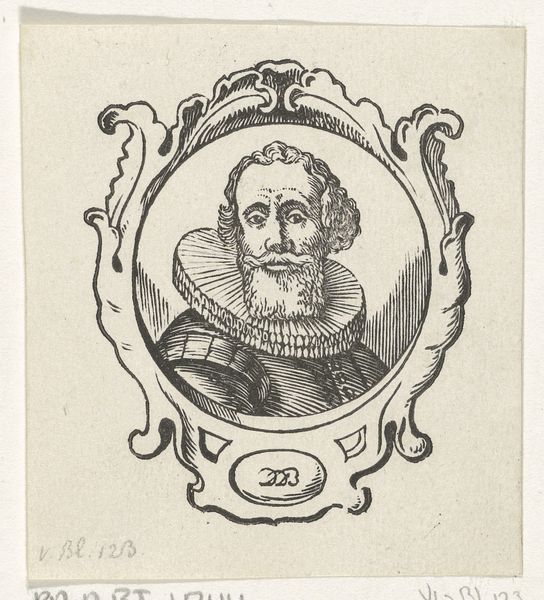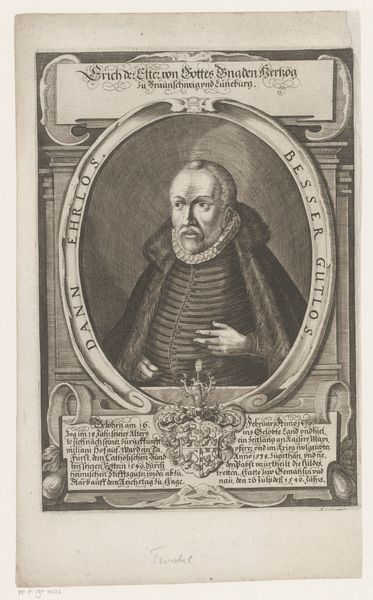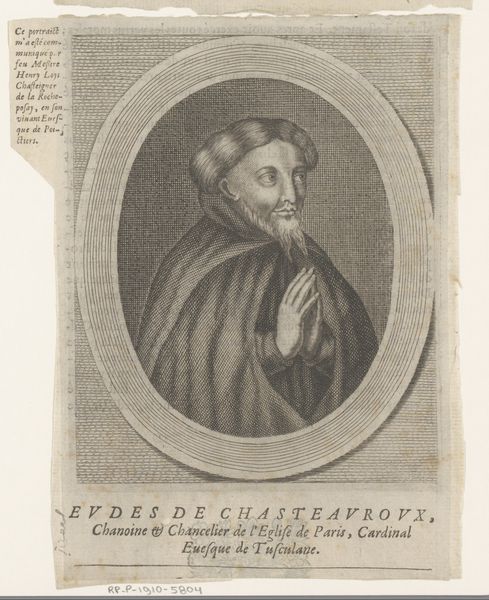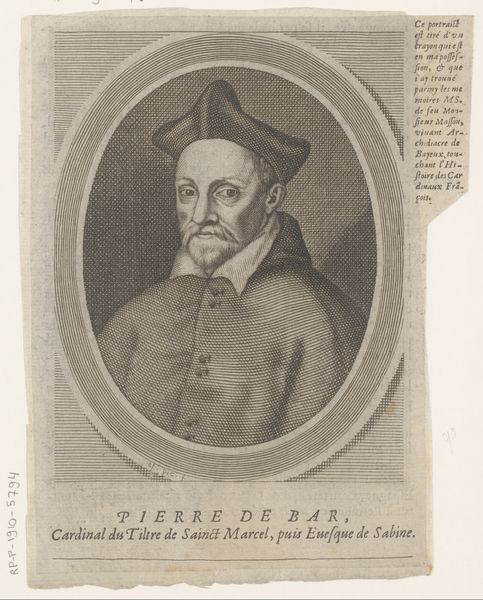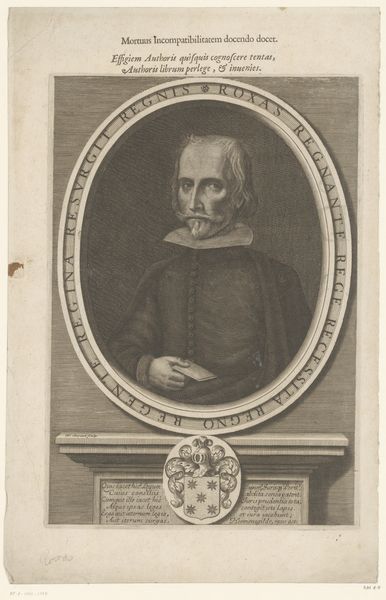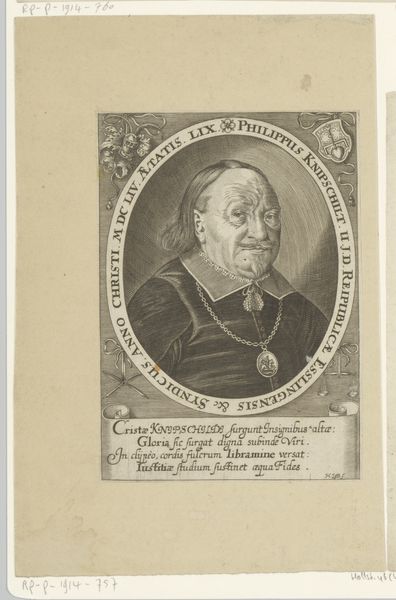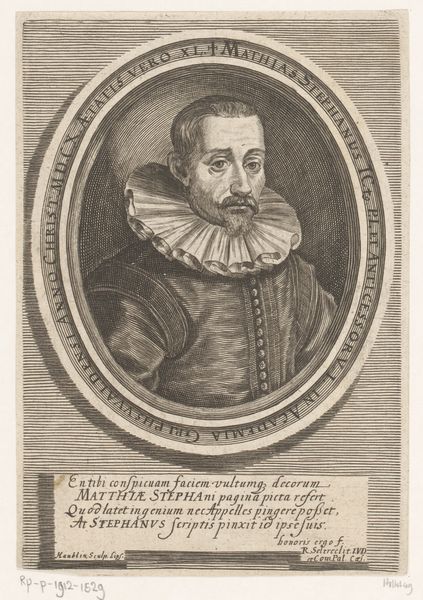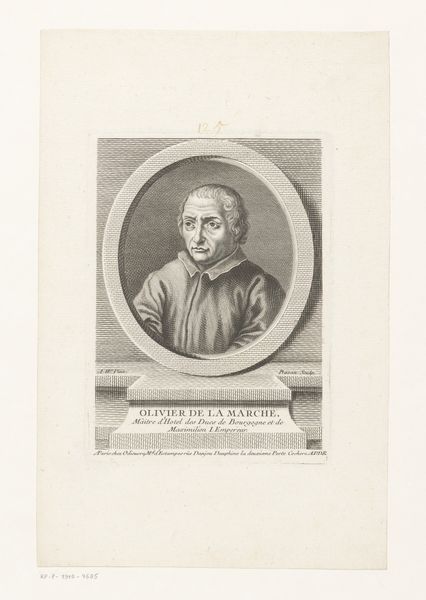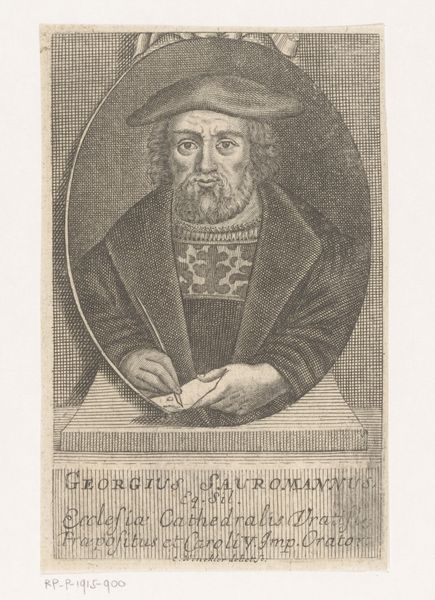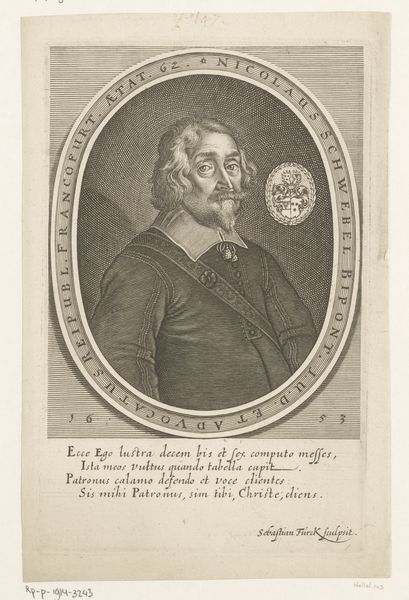
print, engraving
#
portrait
# print
#
old engraving style
#
history-painting
#
engraving
Dimensions: height 174 mm, width 140 mm
Copyright: Rijks Museum: Open Domain
Editor: This is "Portret van Guillaume de Bray," a print made in 1660 by Etienne Picart. It's an engraving, and the detail is just stunning. I’m immediately struck by the use of line, how it defines the face and clothing. What draws your eye when you look at this work? Curator: The meticulous hatching technique indeed commands attention. The dense network of fine lines creates not only form but also varying tonal values. Observe how Picart manipulates the direction and density of these lines to model the face, creating subtle gradations of light and shadow. Notice too, the linear precision in the depiction of the oval frame contrasted with the comparatively softer lines describing the subject’s robes. Editor: That's fascinating. So, you are looking at the contrasts in the linework and the formal structure first, rather than, say, the subject of the portrait or historical context? Curator: Precisely. My focus rests on how the visual components themselves create meaning. How the texture achieved via engraving contributes to the perceived reality, if you will, of the figure. One could also look into the relationship of positive to negative space – see the way the textual elements serve almost as blocks grounding the airy subject within the print. Does such placement help with the structural unity? Editor: It's true, the text anchors the image and feels very deliberate. Thinking about it formally like this opens up so much more to consider. Thanks! Curator: And through this focused attention on the components, we can both arrive at a clearer perception of artistic expression.
Comments
No comments
Be the first to comment and join the conversation on the ultimate creative platform.
